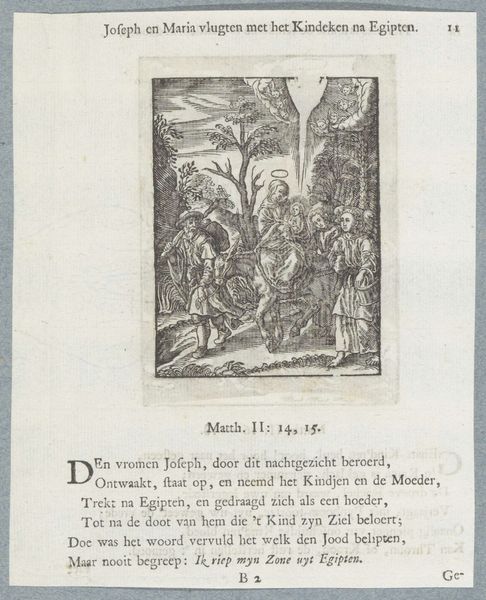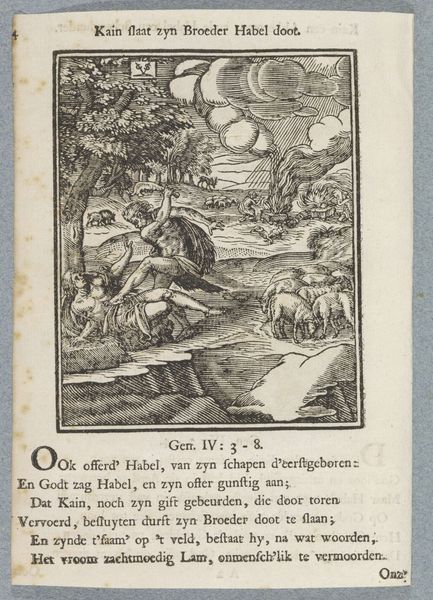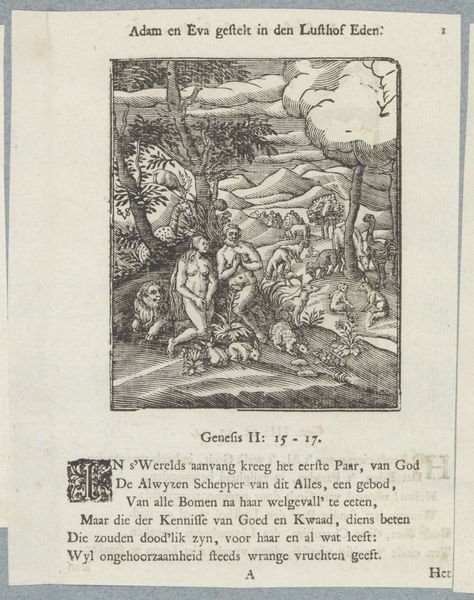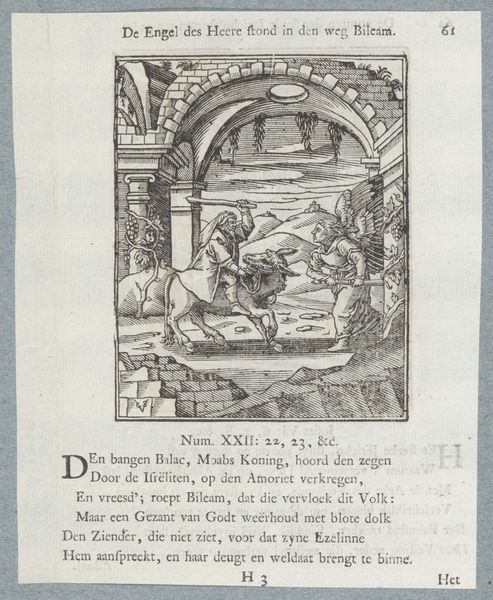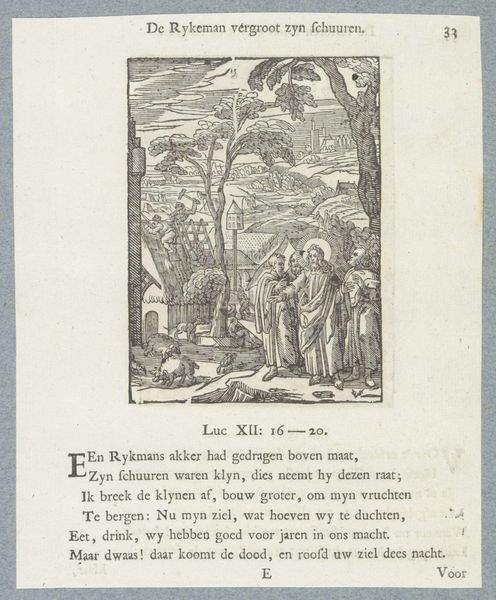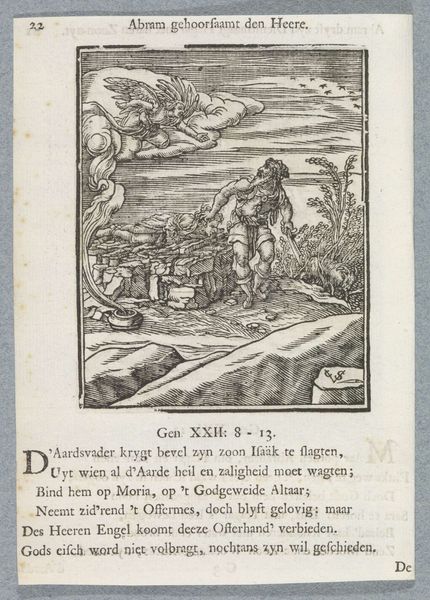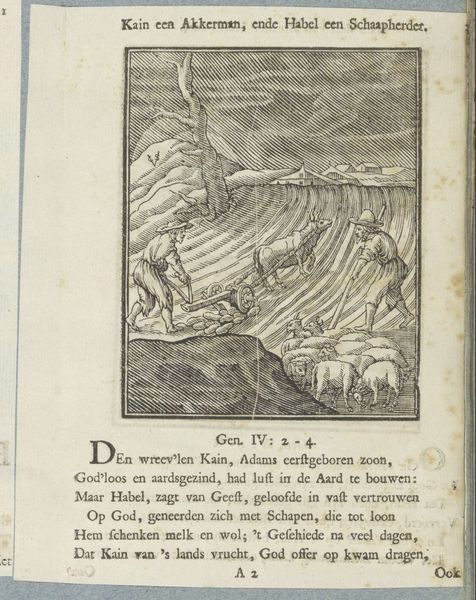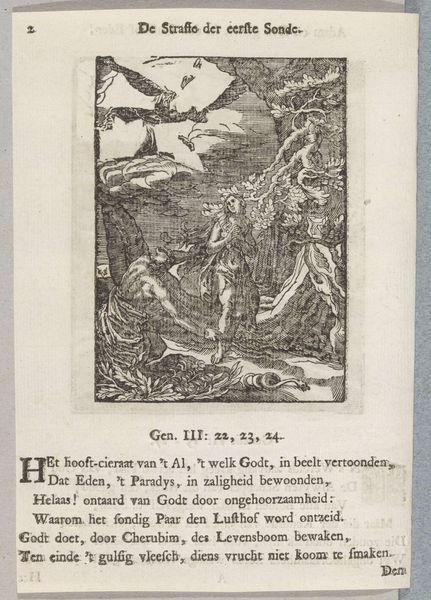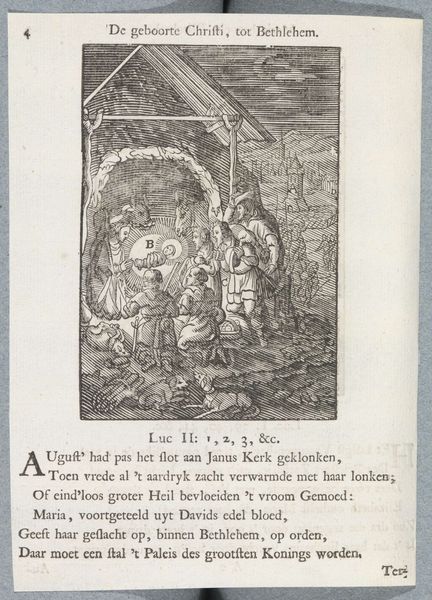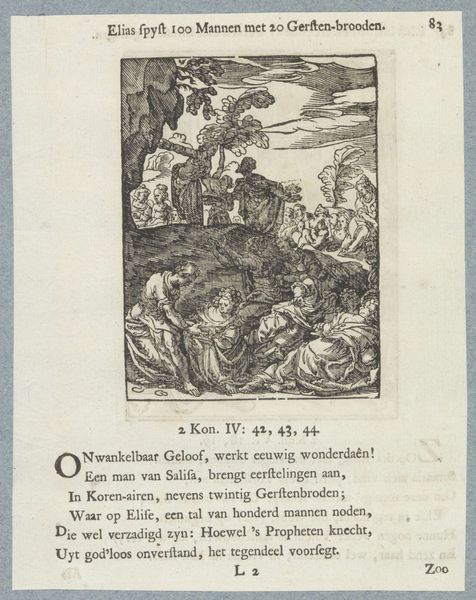
print, woodcut, engraving
#
comic strip sketch
#
aged paper
#
page thumbnail
#
narrative-art
#
baroque
# print
#
old engraving style
#
traditional media
#
figuration
#
personal sketchbook
#
sketchwork
#
woodcut
#
line
#
sketchbook drawing
#
history-painting
#
storyboard and sketchbook work
#
sketchbook art
#
engraving
Dimensions: height 106 mm, width 86 mm, height 170 mm, width 136 mm
Copyright: Rijks Museum: Open Domain
Editor: Here we have "Mannen in de vuuroven," or "Men in the Fiery Furnace," a woodcut or engraving made sometime between 1645 and 1740 by Christoffel van Sichem II, currently residing in the Rijksmuseum. It depicts a rather dramatic scene, complete with flames, figures, and what looks like a statue being worshipped. What do you see in this piece, and how does it resonate within its historical context? Curator: This piece presents a powerful visualization of religious persecution and resistance. Focusing on the story from the Book of Daniel, we can examine this print as a statement on religious identity and power dynamics in 17th and 18th century Netherlands. Consider the visual language: the imposing figure of Nebuchadnezzar, contrasted with the small figures thrown into the furnace. How does the artist use scale to portray the abuse of power? Editor: It does seem to be a deliberate choice to show Nebuchadnezzar so prominently above everyone else. So it's not just a Bible story being depicted, but perhaps a comment on authority? Curator: Precisely. During this period, the Netherlands witnessed its own struggles with religious freedom and tolerance. Exploring that tension between state authority and religious belief is key to unlocking the print's significance. It also prompts reflection: in what ways are we still seeing similar power dynamics playing out today regarding freedom of belief and expression? Editor: That's a fascinating point. Thinking about it through that lens makes the artwork feel incredibly relevant, bridging the gap between the historical and contemporary. I hadn’t initially considered how it could connect to ongoing social justice matters. Curator: And that is the beauty of engaging with art critically. It compels us to think beyond the surface, prompting us to question, to challenge, and hopefully, to act.
Comments
No comments
Be the first to comment and join the conversation on the ultimate creative platform.


